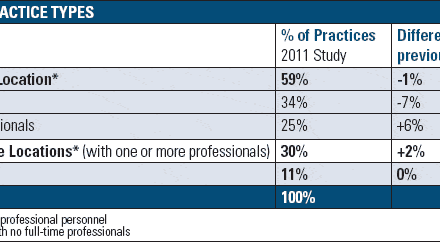Four successful doctors from across different healthcare specialties including cosmetic surgery, dentistry, veterinary medicine, and audiology share how they have successfully attracted new patients through patient referrals, community outreach, social media, and word-of-mouth advertising.
By Melissa Rose, AuD; Justin West, MD, FACS; Brian Harris, DDS; and Kathy Wiederkehr, DVM
Independent practice owners across healthcare specialties share common opportunities and challenges. For example, providers and teams are constantly seeking to attract new patients, which is critical to practice success. In hearing health it can be especially challenging when you factor in seasonality and the annual migration of snowbirds. For some, the winter months see little volume, while for others it is the busy season. Here are four perspectives on successfully improving new patient volume.
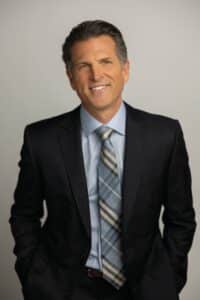
Growth Starts from the Inside Out—Dr Justin West
Hands down the best way to get new patients is referrals from existing patients. It starts by creating a patient experience so that existing patients become practice advocates who leave amazing reviews, which are critical in today’s digital world.
Healthcare is personal. A patient’s decision to choose you is a big decision for them—especially when it comes to surgery or life-changing care like hearing health. From the first point of contact—whether that’s online or by phone—the patient needs to feel and believe that they will get the best care possible from you and your team.
Here are a few tips:
Be appreciative and respectful of their time. A highly trained and empathetic human being should always answer your phone in three rings. The goal of the call is to answer questions while building trust and a relationship.
We first say, “Thank you for considering Finesse for your cosmetic surgery. May I ask who we can thank for referring you?” This communicates that our patients are so happy they trust us with their friends and family.
We then seek to schedule an appointment with, “We’d love to answer all your questions to see if we’re a good fit for you. When would you like to meet Dr West?”
Listen, learn, and confirm patients understand. Studies have shown that when you sit with a patient, patients have a perception that you have spent more time with them and connected on a deeper level. For that reason, we always do our consultations sitting at eye level with our patients.
Similar to an audiology practice, a significant percentage of our patient base is above age 50 and struggles with hearing. For this reason, we use visual learning tools to ensure that patients can see and hear the information being presented and then ask open-ended questions to confirm understanding.
Empathize with the psychology of the disease. Many patients with hearing loss, like my dad, don’t want hearing aids. They don’t want to be at your practice. Similarly, my cancer patients certainly don’t want to have to go through reconstruction surgery. I start my consultations acknowledging this in a meaningful and empathetic way. In audiology it may sound something like, “I am really sorry that you’re experiencing hearing loss and know you may not really want to be here. But I am going to do everything I can to find options that will work best for your lifestyle.”
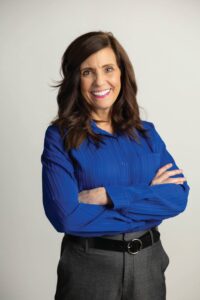
It Takes a Community—Dr Kathy Wiedenkehr
For months I worked from a portable office that sat in the parking lot of the practice we were creating, which was located in a business/commercial area. From day one, it was about building community. Once our doors officially opened, we began doing community outreach because we wanted to not only gain exposure and new clients, but we wanted to be that friendly neighbor that you like and trust. Community outreach is not for everyone, so we needed to find the right team members who were enthusiastic and outgoing.
Here’s what worked for us.
Create practice ambassadors. Everyone on our team loves what they do and they know they make a difference in people’s and pets’ lives. In audiology I imagine that impact is even bigger. Knowing that these ambassadors are representing our business, we wanted to make sure they had the right personality and the right tools to make a positive and lasting impression. And we proactively and purposefully scheduled time for them to do community outreach. This is not something to do “only if there is extra time” because there is never extra time, just the decision to use the time we have strategically.
Meet, greet, and educate. Our team is trained and equipped to go to local businesses and apartments and create opportunities to promote and educate. We worked with the managers and have found they are happy to have us come in and do a fun and entertaining education seminar as a value add to employees and residents.
Pick a topic people would be interested in and want to learn about that is aligned to your services. Remember, the goal is to help, not sell.
Open houses open doors. We also scheduled annual open houses because we found once someone has set foot inside your door, returning as a client is much easier. We enlisted the participation of vendors to make the events fun and festive. Give-aways, refreshments, games, and a take-home goodie bag were helpful in attracting clients for the event and getting them to return for care. We also implemented a post-event client follow-up strategy that included thank-you notes, an email, and an appointment incentive.
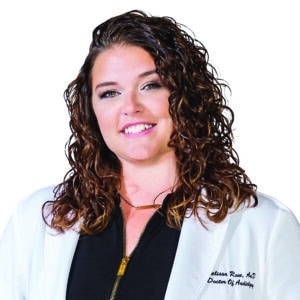
Referrals Create a Transfer of Trust—Dr Melissa Rose
The good news is more and more people are talking about preventive hearing healthcare and companies like CareCredit are amplifying the message to consumers about hearing loss prevention and early intervention. As audiologists, we know that hearing health exams should be as routine as dental and eye exams. To attract new patients, we are visible and vocal advocates in marketing and community outreach efforts—from our social media posts and website to events at our local senior centers and churches.
In addition, we are focused on building professional relationships with primary care providers and ENTs. Patients often discuss hearing issues with their general doctor, so these healthcare professionals are a great referral base. And more importantly, they are in a great position to partner with us in proactively educating patients on the benefits of routine, annual hearing exams.
We hold educational sessions at local medical offices to share the research and data that indicates hearing loss prevention should be discussed with patients of all ages—especially teens—and that patients 40+ should be encouraged to get a baseline and annual hearing exam. If the doctors and their teams are aware of the link between hearing loss and other medical issues, they can also become vocal advocates.
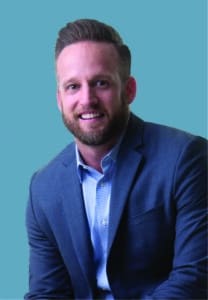
What You “Do” Is More Than Clinical Care—Dr Brian Harris
We’ve all had that “a-ha moment” or what I call the awakening. My eyes were opened to the reality that there’s a more efficient way to attract new patients if we just focus on the patient’s perspective—not ours.
In 2016 I was having an amazing day at the office doing what I love to do—patients were excited about the work I was doing and the results that they were getting. Later that evening I shared with my wife how fantastic it would be to have every day be like that particular day. Then she said something that stuck: “Everyone knows you’re a dentist, but nobody knows what you do—which is positively impacting patients’ lives.”
From that awakening, I began looking at marketing—and specifically social media—in a different way. I realized people don’t want to see teeth. They want to see patients who are now more confident in so many aspects of their lives because they have a healthy and beautiful smile. They want to see what they could have—emotionally.
I tested the idea by only posting real-life patients in real life smiling and radiating confidence. Within weeks people were reaching out to me, and I realized social media is the perfect tool to create immediate communication and connections and it can build a massive amount of trust.
One patient, I’ll call her Kendall, shared how self-conscious she was about her smile via Instagram messenger and that she’d been to multiple consults but hadn’t moved forward. She sent me a picture of her smile. Instead of just typing out my response, which has little personality and zero engagement, I sent her a short little video.
This was my first video consult and in it I shared what I could do for her as a cosmetic dentist, approximate costs, payment options like the CareCredit credit card, and what I believed her outcomes could reasonably be based on her smile. It was not a diagnosis; it was sharing with her the possibilities and information she needed to take the next step. I ended it with an “I’m here when you’re ready” statement and she booked a consult a few weeks later.
Kendall went from zero-confidence to self-confidence in about a month. I can’t even imagine the life-changing results audiologists create every single day. Since that a-ha moment, Instagram has become my number one new patient outreach and I have 340,000 followers.
There are three key learnings here:
1. Social media should show what you do, not how you do it. So share patients’ positive outcomes and the emotional impact it has had on their lives. Patients are your most powerful marketing asset and when they are happy with the results, they are happy to help.
2. Respond immediately and personally. When you can’t be face-to-face, shoot a quick video so they can get to know you as a human, not a typed response or email.
3. In the video, make the next step easy by looking at it from the patient’s perspective and what they want to know, not what you want to tell them. They want to know the options, how much is it going to cost, how they can pay for it through financing, what they can expect in terms of the process and outcomes, and if they can trust you as a provider.
I have many patients over age 50 and I’ve found they want simplicity. They want the process to be easy and they want to feel comfortable and cared for. When we do all those things we make it easy for them to choose us and move forward with treatment.
About the Authors:
Melissa Rose, AuD, is the owner of Nardelli Audiology in West Virginia and a certified audiologist. She evaluates and treats hearing in adults with advanced digital hearing aid technology and advanced wireless technology.
Justin West, MD, FACS, is a board-certified plastic surgeon and owner of Finesse Plastic Surgery in Orange, CA, focusing on aesthetic surgery of the face, breasts, and body.
Brian Harris, DDS, is a practicing dentist in Phoenix, AZ. He is the CEO and founder of www.smilevirtual.com, a tele-dentistry platform, and creator of www.klenproducts.com.
Kathy Wiederkehr, VMD, has been practicing veterinary medicine at pet care facilities in California since 2001. Most recently, she served as medical director of the VCA PetPoint Medical Center and Resort in Irvine.
Featured image: Dreamstime


